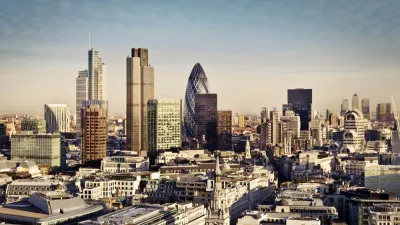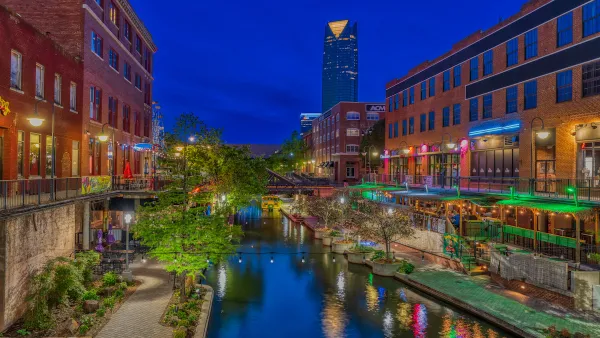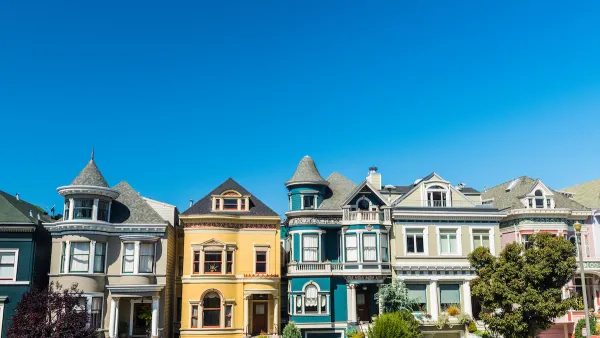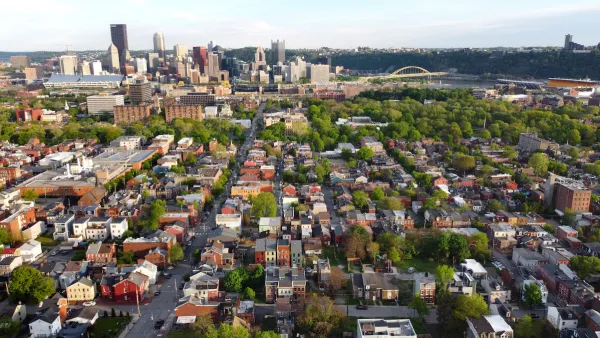An essay identifies imperatives for a new theory of tall, dense construction, and begins to sketch out a theory that will reconcile the skyscraper with contemporary business ideals.

Diana Lind's essay from the book The Future of the Skyscraper is available in full on Medium. Lind joins a distinguished group of writers in that book, with an essay that tests "the idea of building tall against the more sprawling needs of new industries."
Lind launches the essay's argument by citing the emblematic design of Facebook's headquarters, an adaptive reuse of the suburban office park once used by Sun Microsystems. The campus, argues Lind, embodies the tenants of New Urbanism, which is not necessarily a good thing. "This kind of deceptive architecture, devoid of theory but heavy on fantasy, has become not just the norm but a vogue of our times," writes Lind. "While contemporary aesthetics may profess to aspire to authenticity, the real and the sincere are often confused today with a fetishization of the past."
Moreover: "At a time of increasing resource scarcity and environmental stress, we should be shunning office parks like that of Facebook’s, built a ninety-minute car commute from the urban core where most of its employees live. With population growth and rising rents showing no sign of abating, low-density, New Urbanist designs simply cannot accommodate the demand of more than seven billion people on the planet."
The question posed by the essay is how to reconcile the skyscraper, assuming it brings economic, social, and environmental benefits, with the aesthetics of contemporary business. Some of that potential for reconciliation, according to Lind, acknowledges the shortfalls of how skyscrapers have been built in New York and other cities. Lind even agrees with the teachings of New Urbanism on the common skyscraper's negative effect on the human experience of the street.
To start the skyscraper on a path to rebirth, Lind suggests a surprisingly obvious concept: style. According to Lind, "[i]t is imperative that a new theory for skyscrapers be developed, one that will accommodate our culture’s values."
Read through the article for more on what that theory looks like.
FULL STORY: The Form Could Be Reborn

National Parks Layoffs Will Cause Communities to Lose Billions
Thousands of essential park workers were laid off this week, just before the busy spring break season.

Retro-silient?: America’s First “Eco-burb,” The Woodlands Turns 50
A master-planned community north of Houston offers lessons on green infrastructure and resilient design, but falls short of its founder’s lofty affordability and walkability goals.

Delivering for America Plan Will Downgrade Mail Service in at Least 49.5 Percent of Zip Codes
Republican and Democrat lawmakers criticize the plan for its disproportionate negative impact on rural communities.

Test News Post 1
This is a summary

Test News Headline 46
Test for the image on the front page.

Balancing Bombs and Butterflies: How the National Guard Protects a Rare Species
The National Guard at Fort Indiantown Gap uses GIS technology and land management strategies to balance military training with conservation efforts, ensuring the survival of the rare eastern regal fritillary butterfly.
Urban Design for Planners 1: Software Tools
This six-course series explores essential urban design concepts using open source software and equips planners with the tools they need to participate fully in the urban design process.
Planning for Universal Design
Learn the tools for implementing Universal Design in planning regulations.
EMC Planning Group, Inc.
Planetizen
Planetizen
Mpact (formerly Rail~Volution)
Great Falls Development Authority, Inc.
HUDs Office of Policy Development and Research
NYU Wagner Graduate School of Public Service





























